ARTICLE AD BOX

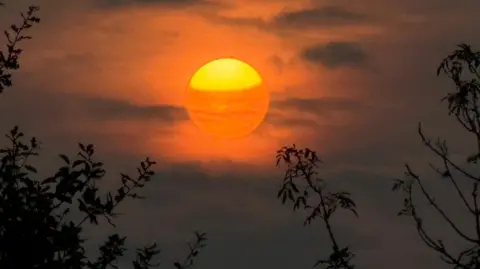 Peter Barrett / BBC Weather Watchers
Peter Barrett / BBC Weather Watchers
This morning's sunrise in Hornchurch, East London
Smoke from wildfires across the Atlantic has brought spectacular vivid colours to sunsets and sunrises across the UK this weekend.
Fires have blazed across North America this summer, and smoke particles have been carried by the jet stream to the skies above the British Isles.
The unusual hues should continue until Monday, when more unsettled weather will begin to dissipate the smoke in the upper atmosphere.
But skywatchers could also be in for a treat on Monday night, when a rare blue supermoon appears above the UK.

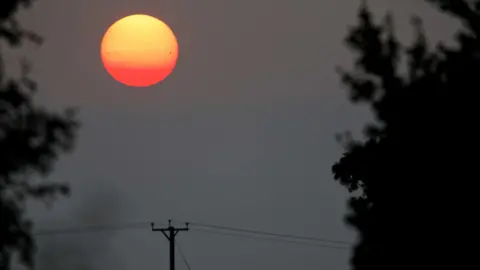 Jamie Cooper
Jamie Cooper
The sunset was even more striking than usual this weekend because of forest fires in the US and Canada putting up smoke and particles into the atmosphere.
If sunrises and sunsets this weekend appeared a little different, it was because of smoke from wildfires in Canada travelling across the Atlantic on the jet stream, a high altitude current of air responsible for much of the UK's climate, according to BBC forecaster Grant Burleigh-Harvey.
"It makes the sky look more orange," he says, as the smoke particles "diffuse the sunlight".

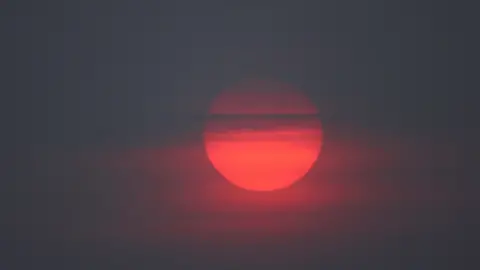 Nandrew / BBC Weather Watchers
Nandrew / BBC Weather Watchers
A glowing sunrise in Waldringfield, Suffolk
This can lead to "more vivid" sunsets and sunrises which is what happened over Saturday and Sunday night, he says, and will continue until Monday evening.
There's a "sepia effect", Mr Burleigh-Harvey says, referring to red, brown and orange hues which can make for more dramatic views.
He adds that because the smoke is high up, there's no risk to people's health and the haze is expected to have moved on by Tuesday morning.

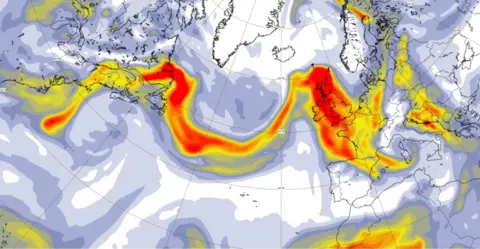 Copernicus
Copernicus
This image forecasts what the smoke from North America travelling over the Atlantic to the UK will look like on Monday 18:00 BST
What is a supermoon?
The UK skies will play host to a rare lunar phenomenon on Monday night - a blue super moon.
Monday's full moon is not just a supermoon. It's also a blue moon, but those hoping to see a bluish shade to the satellite are out of luck.

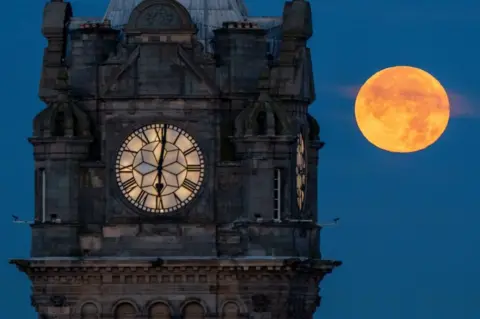 PA
PA
A super blue moon, seen here next to the Balmoral Clock in Edinburgh, last August
A blue moon refers to the third full moon in a season with four full moons, as is the case with this full moon. It can also refer to the second full moon in a month with two full moons.
A supermoon appears brighter and bigger than usual because the moon's orbit brings it closer to earth.
The last time the UK witnessed a combined super blue moon was last August - but if you miss it, the next one is reportedly not due until 2037.

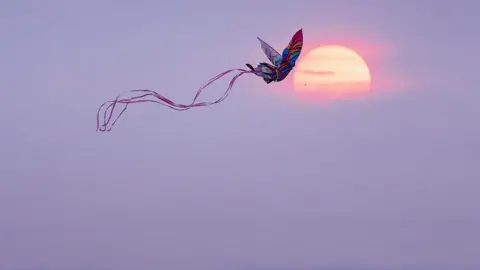 Diana / BBC Weather Watchers
Diana / BBC Weather Watchers
Last night's sunset in Dunstable, Central Bedfordshire

 9 months ago
48
9 months ago
48








 English (US) ·
English (US) ·